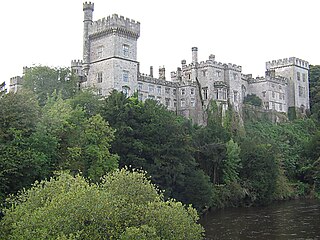
A dormitory is a building primarily providing sleeping and residential quarters for large numbers of people such as boarding school, high school, college or university students. In some countries, it can also refer to a room containing several beds accommodating people.

The Metropolitan State Hospital was an American public hospital for the mentally ill, on grounds that extended across parts of Waltham, Lexington, and Belmont, Massachusetts. Founded in 1927, it was at one time the largest and most modern facility of its type in Massachusetts. It was closed in January 1992 as a result of the state's cost-cutting policy of closing its mental hospitals and moving patients into private and community-based settings. The main complex of buildings has subsequently been redeveloped into apartments. The hospital campus was listed on the National Register of Historic Places 1994. The property also housed the Gaebler Children's Center for mentally ill youth. You can still get into the building.

Bowles Hall is a coed residential college at the University of California, Berkeley, known for its unique traditions, parties, and camaraderie. Designed by George W. Kelham, the building was the first residence hall on campus, dedicated in 1929, and was California's first state-owned residence hall. It was built in 1928 on a $350,000 grant by Mary McNear Bowles in memory of her husband, Cal alumnus and UC Regent Phillip E. Bowles. Mr. Bowles was said to have three loves: horses, horticulture and the University of California. The Bowles family is said to have lost its fortune during the Great Depression.

Morningside College is a private liberal arts college affiliated with the United Methodist Church and located in Sioux City, Iowa. Founded in 1894 by the Methodist Episcopal Church, Morningside College has 21 buildings on a 68-acre (280,000 m2) campus in Sioux City. The Morningside College Historic District, which includes most of the campus, is on the National Register of Historic Places.
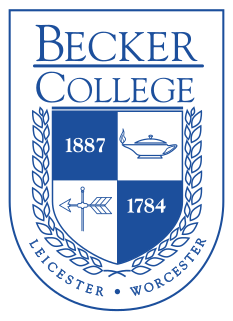
Becker College is a college in central Massachusetts, United States, with campuses in Worcester and Leicester. Becker College traces its history from the union of two Massachusetts educational institutions—one founded in 1784 and the other in 1887. The college offers more than 40 undergraduate degree programs including nursing programs, a veterinary science program, and video game design and development programs. The college's 2016-17 enrollment was 1,892. Becker College has more than 21,000 alumni.
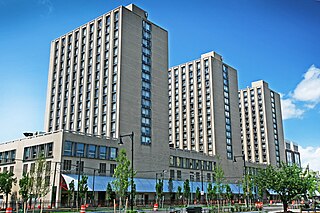
The Boston University housing system is the 2nd-largest of any private university in the United States, with 76% of the undergraduate population living on campus. On-campus housing at BU is an unusually diverse melange, ranging from individual 19th-century brownstone town houses and apartment buildings acquired by the school to large-scale high-rises built in the 60s and 2000s.
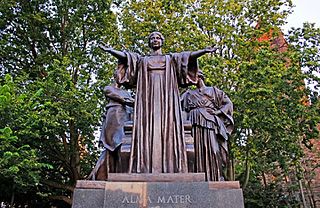
The Main Quadrangle at the University of Illinois at Urbana–Champaign comprises the main campus of the university. It is a major quadrangle surrounded by buildings of the College of Liberal Arts and Sciences (LAS) and is the center of campus activities.

Hugh Asher Stubbins Jr. was an architect who designed several high-profile buildings around the world.
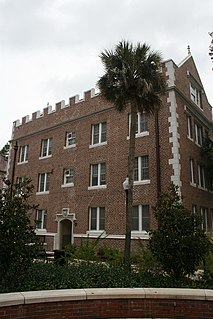
Buckman Hall is a historic building located in Murphree Area on the University of Florida campus in Gainesville, Florida, United States. It was designed by architect William A. Edwards in the Collegiate Gothic style and opened in 1906 as one of the two original buildings on the University of Florida's Gainesville campus. It once was a multi-purpose facility, but has been used exclusively as a student dormitory since the 1940s.

West Campus is an area in the westernmost part of Boston University's Charles River campus in Boston, Massachusetts. The area taken up by West Campus takes up most of the footprint of the former grandstand of Braves Field, whose right field pavilion grandstand is currently used as the primary grandstand for Nickerson Field. The former footprint of the stadium also includes the Case Physical Education Center, whose buildings and adjacent tennis courts take up most of the left field pavilion grandstand area.
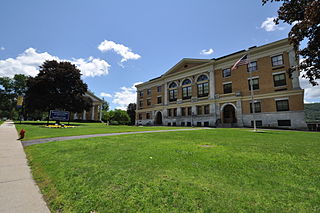
The Normal School Historic District is a historic district in North Adams, Massachusetts. It consists of a group of ten buildings located along Church Street, roughly from Bradley Street in the south to Murdock Hall on the campus of the Massachusetts College of Liberal Arts (MCLA) in the north. The buildings represent a period of cohesive development of the area in the late 19th and early 20th centuries, shortly after the normal school was established. It includes nine houses, eight of which are private residences, and one institutional building, Murdock Hall, dating to the inception of the normal school. The tenth building is the President's House, which is next door to Murdock Hall on the MCLA campus.

Agnes Howard Hall, also known as Ladies Hall or "Aggie," is a historic dormitory building located on the campus of West Virginia Wesleyan College at Buckhannon, Upshur County, West Virginia. It was built in 1895, and is a four-story brick building primarily used as a residence hall. It features an eclectic design with three tower caps and multiple hip roofs. An addition was completed in 1929 and extensive renovations occurred in 1952. It contains 77 sleeping rooms and 26 main bathrooms, along with office areas for residence assistants, lounge areas, kitchen facilities, and maintenance storage rooms. It was the first dormitory constructed at West Virginia Wesleyan College and the oldest on campus. It was officially named Agnes Howard Hall in 1920, in memory of a young coed who had died while a student at Wesleyan.

Fifteen percent of University of Houston students live on campus. UH has several on campus dormitories: Moody Towers, The Quadrangle, Cougar Village I, Cougar Village II, Cougar Place, and Calhoun Lofts. UH also has partnerships with three private complexes, Bayou Oaks, Cullen Oaks, and Cambridge Oaks.

The Baldwin-Wallace College South Campus Historic District is an area of land on the south end of the Baldwin Wallace University campus. When the district was established, the school was Baldwin-Wallace College. BW is a four-year private, coeducation, liberal arts college in Berea, Ohio, United States. The school was founded in 1845 as Baldwin Institute by Methodists settlers. Eventually the school merged with nearby German Wallace College in 1913 to become Baldwin-Wallace College, which adopted the present name in 2012. Several buildings since its founding have been established on the National Register of Historic Places, establishing this area as the Baldwin-Wallace College South Campus Historic District.
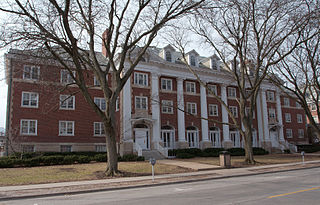
The Busey–Evans Residence Halls, historically known as the Women's Residence Hall and the West Residence Hall respectively, are historic dormitories at the University of Illinois at Urbana–Champaign. Busey Hall was built in 1916, while Evans Hall was built in 1926; a connector wing links the two buildings, and they are considered part of the same dormitory complex. James A. White designed Busey Hall, while Charles A. Platt designed Evans Hall; both architects played an important role in designing other buildings on the university's campus, and both chose the Georgian Revival style for their designs to match the campus's architectural theme. The Women's Residence Hall was the first residence hall on the university's campus; the all-female dormitory filled a need for women's housing at the university, which had been privately maintained and in short supply. The hall quickly filled up, and the West Residence Hall was built to provide additional space for female students. In 1937, the buildings were renamed for university trustees Mary E. Busey and Laura B. Evans. The residence halls were still in use as all-female student housing until the fall semester of 2019, when the Evans hall was designated as all male for the first time in its history to accommodate the closure of another all male residence hall on campus.

The Little Campus is a historic district and part of the University of Texas at Austin campus in Austin, Texas. Originally built in 1856 as the Texas Asylum for the Blind, the complex was used for a variety of purposes through the late nineteenth and early twentieth centuries. It was acquired by the University of Texas after World War I and listed on the National Register of Historic Places in 1974.






